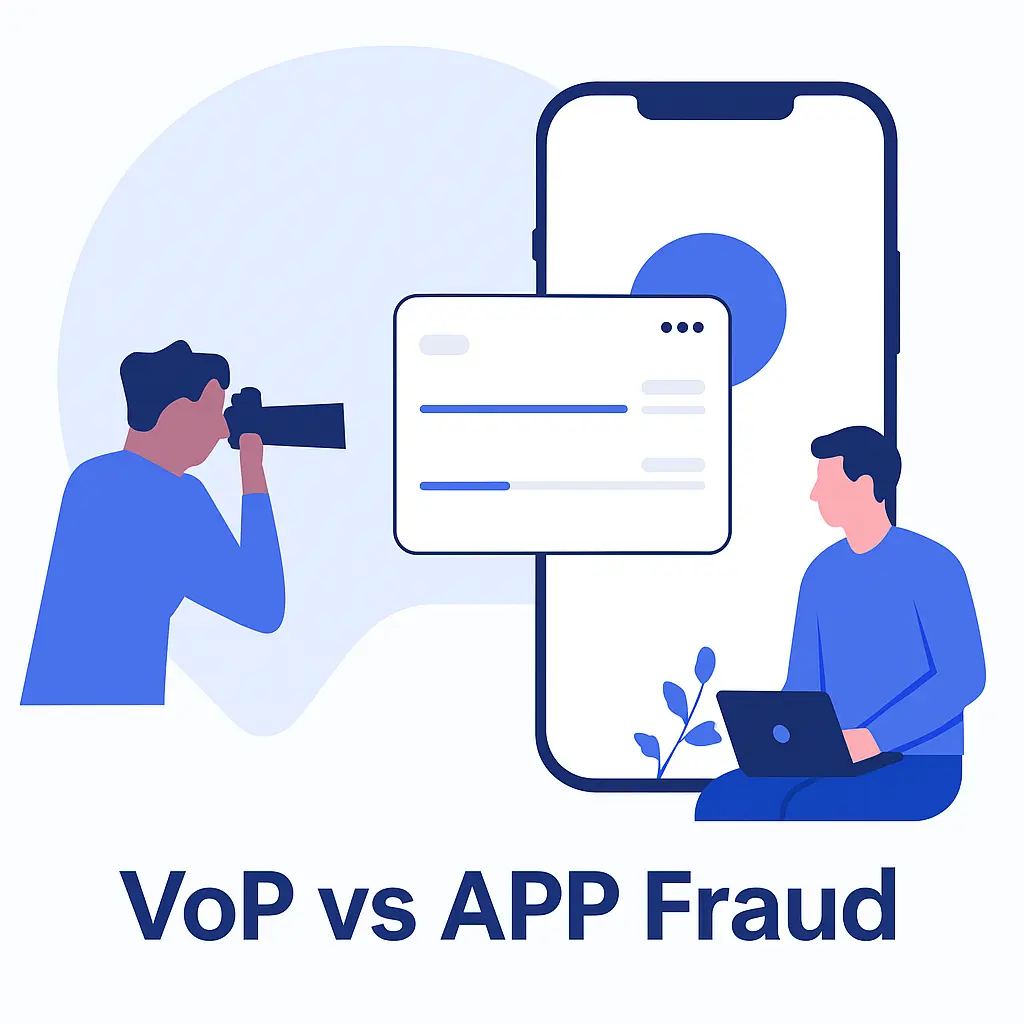VoP vs APP Fraud - How It Actually Works in Real-Time Scenarios

The Growing Threat of APP Fraud
In the digital payments era, Authorized Push Payment (APP) fraud is one of the most devastating and fast-growing forms of financial crime. Unlike traditional fraud, APP scams trick individuals or businesses into willingly transferring money to fraudsters posing as legitimate contacts — a supplier, a CEO, or even a bank.
In Europe, APP fraud losses are estimated to be in the billions. As SEPA Instant Credit Transfers (SCT Inst) become the norm, payments are executed in seconds — leaving no time to stop fraudulent transactions once they’re initiated.
This is where Verification of Payee (VoP) becomes a crucial defense mechanism.
What Is VoP and Why It Matters
Verification of Payee is a real-time check that ensures the recipient name matches the IBAN before a payment is executed. By alerting users to mismatches, VoP helps stop APP fraud before the money leaves the account.
VoP is not just a technical enhancement. It’s a compliance requirement under the new EU Instant Payments Regulation, with mandatory implementation in 20 EU countries by October 2025, and for all SEPA participants by July 2027.
Real-Time APP Fraud: What Happens Without VoP
Let’s walk through a typical APP fraud scenario without VoP:
- A company receives a convincing email from what looks like a known supplier.
- The email informs them of a change in bank details and requests payment to a new IBAN.
- An employee initiates a SEPA Instant Credit Transfer for €45,000.
- The payment is executed in under 10 seconds — and the money is gone.
Without any recipient name check, there’s no warning that the IBAN doesn’t belong to the actual supplier. Traditional fraud detection systems often miss these scams because they exploit human trust, not technical vulnerabilities.
How VoP Prevents This in Real Time
Now compare the same scenario with VoP enabled:
- The employee initiates the €45,000 transfer.
- The VoP service instantly checks the IBAN and the provided recipient name.
- There is a mismatch — the name doesn’t match the registered account holder.
- The system either:
- Alerts the user with a warning,
- Blocks the transaction entirely,
- Or routes it for further manual review depending on the risk rules.
That 1.5-second check stops the fraud.
Not Just a Name Check — A Trust Layer
VoP adds a trust layer to every payment. For PSPs, banks, and fintechs, it’s also a competitive differentiator. Customers are more likely to trust platforms that protect their money proactively.
With APP fraud becoming more sophisticated — including deepfakes and real-time social engineering — VoP becomes not just a tool, but a strategic necessity for any payment provider.
Who Needs to Comply — And By When?
Under the EU Instant Payments Regulation:
- All Payment Service Providers (PSPs) offering instant SEPA transfers must implement VoP.
- The deadline for the first 20 EU countries is October 2025.
- All remaining SEPA participants must comply by July 2027.
Failure to implement VoP means not only increased fraud risk but also regulatory pressure and reputational damage.
Integration Scenarios: VoP in Modern Payment Flows
VoP is more than an API call. It impacts:
- Onboarding flows: collecting full legal names upfront.
- Retry logic: what happens when there’s a mismatch?
- UX design: showing the right level of warning or friction.
- B2B payment flows: supplier verification and internal compliance.
For SaaS platforms, BaaS providers, and digital banks, integrating VoP properly is key to staying compliant and avoiding false positives.
VoP as a Strategic Response to APP Fraud
APP fraud won’t disappear — but VoP dramatically reduces its success rate. When implemented correctly, Verification of Payee protects end-users, supports compliance, and strengthens customer trust.
In a payment ecosystem moving toward real-time irrevocable transactions, the need for real-time verification is no longer optional.
Start your VoP implementation now. It’s not just about compliance — it’s about building secure, trusted, and fraud-resistant payment experiences.